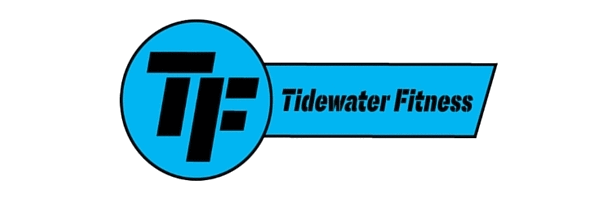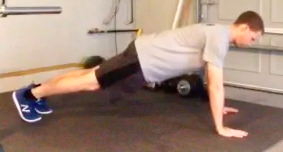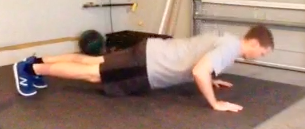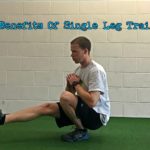Stretching has become the go-to prescription for “tight” muscles. I see trainers suggesting this daily and the average gym user will tell you that stretching is key to more flexibility/mobility.
While I don’t believe stretching is always a bad thing, I think a question needs to be asked- “Is what I’m doing working?” If not, then you need to figure out why.
Have you ever seen a person (or been that person) that stretched day in and day out but end up being no more flexible than when they started? I’m sure most have. But have you thought that there has to be a reason why it is not working?
We treat stretching like most other prescriptions. If one has high blood pressure, they are given blood pressure medication. If one has high cholesterol, they are given cholesterol medication. While this medicine will help treat the symptom, it is not helping to treat the cause.
That my friends is the key! If your blood pressure increases, there has to be a reason. If your cholesterol increases, there has to be a reason. And if your muscles are tight, there IS a reason.
Muscles do not get tight all of a sudden. So this begs the question, why are they tight?
Your body is very smart and will protect itself. It will not allow you to move through certain ranges if it poses an injury risk. For example, if your hamstrings feel “tight”, you may not be able to touch your toes.
If you try to push beyond your sticking point there will be increasing tension on the muscle, which could result in a tear. Your body only allows you to move to a certain point, so this does not happen.
However, you can move out of this range in certain situations, but again the injury risk increases. Think about sprinting even though you have “tight” hamstrings. With each stride that muscle is stretched more and more to the point where it can eventually tear.
As your movement becomes more dynamic, there is less of an ability to control it. Figuring out why it is tight in the first place will go a long way in helping keep you injury free. That why could very well be a lack of stability in the trunk.
In order to have adequate mobility at a joint, you must first possess adequate stability through the trunk. Stability refers to being able to control a movement in a changing environment. Let’s use an example of a sling shot.
If you hold that sling shot very tight and not allow it to move, you will be able to pull the elastic band back really far. However, if you do not provide a stable base for the handle then you will not be able to pull the band back as far.
Your trunk (sling shot handle) provides a stable base for your limbs (elastic cord) to move off of. As the trunk becomes more stable, the extremities will be able to move through a greater range of motion. This, in turn, should lower your risk of injury in more dynamic situations.
Your body knows whether you possess adequate stability or not. If not, it limits your mobility to protect you.
Often times those people that you see stretching all day, would be able to improve their mobility/flexibility if they only spent some time focusing on building stability first. This isn’t the end all be all, but I have seen personally how a more stable trunk facilitates greater mobility.
I bring this up, to get you thinking. I want you to start thinking about why things happen instead of giving them the “general fix”. When something happens in the body, there is always a cause.
We need to be more diligent about finding that cause to solve the problem. If your problem is a lack of trunk stability, I’ve got some exercises you can apply immediately. But first, you need to figure out if you actually would benefit from some stability work.
In order to determine this, all you need to do is get on the ground and perform a push up. The main thing you want to see is that your body move as one unit.
You should see the shoulders and hips move together as you bring your body to top position. This should look like a diagonal line from your head to your toes.
If you see a break in the shoulders and hips, or you can’t do the push-up at all then you would benefit from some stability work.
The exercises I have listed below, will enhance your ability to stabilize your body. Perform them in the order as I have listed here. You will begin in a stationary position and become more dynamic. Each exercise builds upon the following one.
1) Core engaged 3 month breathing
I like to start on the ground when working with anyone having stability issues. It actually helps provide feedback as to whether you are doing the exercise correctly.
You should have three big points of contact (head, upper back, and lower back) as you pull the band down. Just beware of a large arch in the lower back. It should be just enough to fit your fingers under, not your entire hand.
Just focus on maintaining this position as you take 8-10 deep breaths. You do not own a position unless you can take an adequate, full breath in that position. This will help you to start building your stable foundation.
This exercise introduces a slight dynamic component. You will set up just like the 3 month breathing position. From here, you will drop each heel to the ground. You want to maintain your back position on the ground.
This is another great introductory exercise because it is trying to throw you into an unstable position (extension) and you have to resist that. As you drop each heel down, it becomes a little harder to hold the correct position. This is the definition of stability in action.
Rolling is one of the best exercises you can perform to begin integrating good trunk stability while increasing core function. To perform this movement, you will start on your back with one arm overhead. You will drive the opposite arm and head across to roll to your stomach.
Now the catch is that you can’t use your lower body. That defeats the purpose. When you take your legs out of the equation your trunk must be stabilizing appropriately in order to drive you across. If it isn’t then you will not be able to get there.
Most people will try to press their heel into the ground to drive them across. Do not do this. Focus on keeping the core solid and driving that arm and head as far as you can. The legs just come along for the ride.
This is the final exercise as combines everything you just did into one exercise. You are resisting extension, keeping the trunk solid, and moving your body as one unit. The difference is it’s all done simultaneously and you are elevated from the floor.
You will set your body in a diagonal position on your toes. As you move down, you want everything to move at the same time. You don’t want to see the shoulders or hips move first.
When everything moves together, the muscles of the trunk are doing their job of proving a stable base. The incline makes the push up a little easier to perform correctly and allows you to build stability before working to the floor. This is the reason behind it.
Wrapping Up
If you are having problems with “tight” muscles, try these exercises and then reassess where you feel tight. Stretching may not be a bad idea, but many do it just to do it. It is not always going to work.
Your body needs stability to move optimally. That tightness may be the result of a dysfunctional system. The good news is that it can be corrected.
Try implementing these exercises several times weekly. By doing this, it will provide you with a new stable base and improved mobility. I’m sure they will have you performing at new levels and feeling like a new person.
If you are looking for a personal trainer in Savannah, contact me to set up a consultation.
And if you found any of this information helpful, or know of someone it could help please share with others!










2 Comments
[…] These tests can be things like a squat, lunge, and push-up. They are not performed to only gauge your ability to do them, but also things like ankle mobility, hip mobility, shoulder mobility, and trunk stability. […]
[…] These tests can be things like a squat, lunge, and push-up. They are not performed to only gauge your ability to do them, but also things like ankle mobility, hip mobility, shoulder mobility, and trunk stability. […]